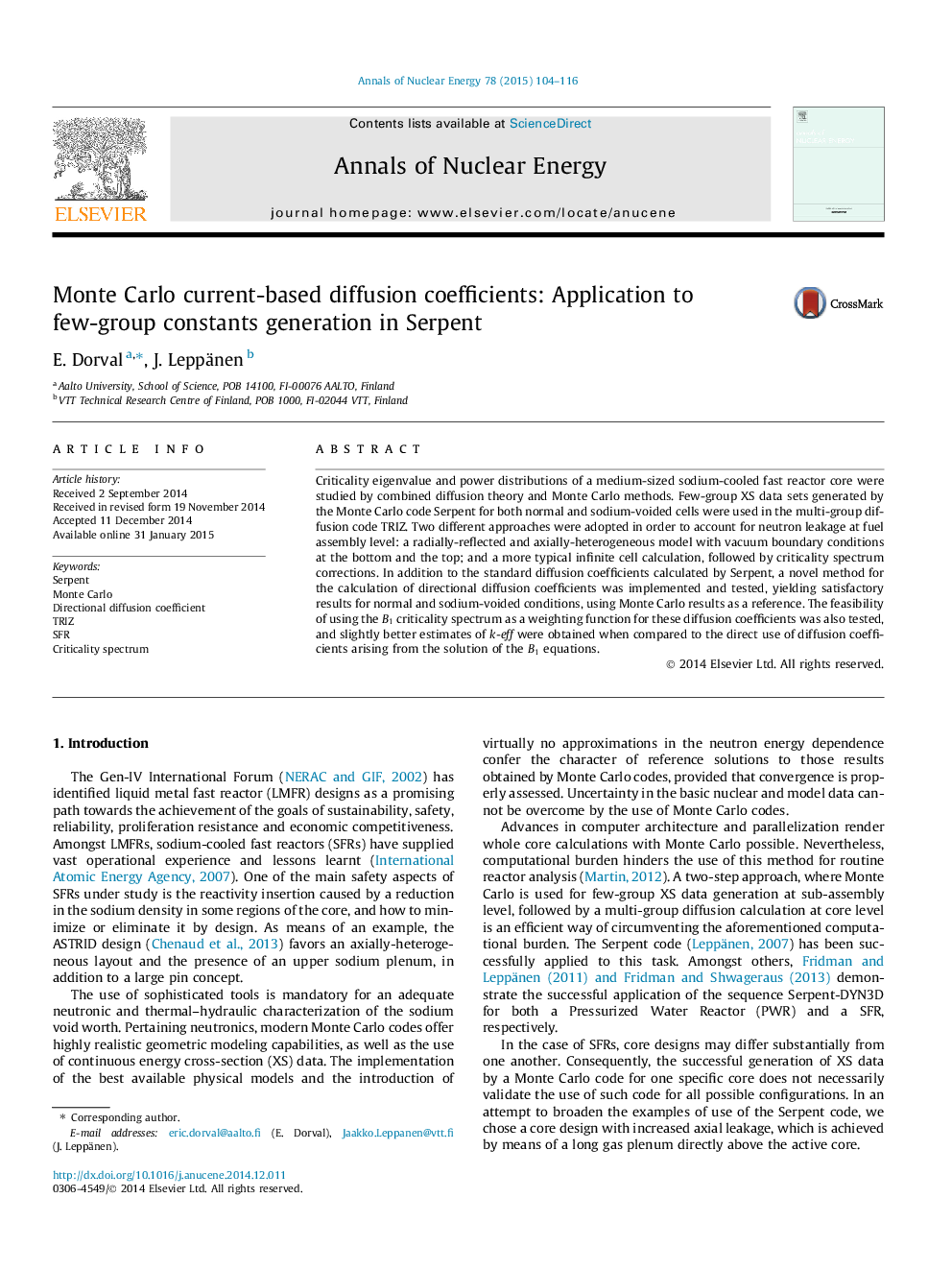| Article ID | Journal | Published Year | Pages | File Type |
|---|---|---|---|---|
| 1728096 | Annals of Nuclear Energy | 2015 | 13 Pages |
•Implementing a new Monte Carlo method for axial diffusion coefficients in Serpent.•Fast reactor diffusion calculations via Monte Carlo XS data generated by Serpent.•Comparison between the use of isotropic or directional diffusion coefficients.•Comparison between two formalisms to account for neutron leakage at cell level.•Quantification of the effect of group condensation onto a coarse 7-group structure.
Criticality eigenvalue and power distributions of a medium-sized sodium-cooled fast reactor core were studied by combined diffusion theory and Monte Carlo methods. Few-group XS data sets generated by the Monte Carlo code Serpent for both normal and sodium-voided cells were used in the multi-group diffusion code TRIZ. Two different approaches were adopted in order to account for neutron leakage at fuel assembly level: a radially-reflected and axially-heterogeneous model with vacuum boundary conditions at the bottom and the top; and a more typical infinite cell calculation, followed by criticality spectrum corrections. In addition to the standard diffusion coefficients calculated by Serpent, a novel method for the calculation of directional diffusion coefficients was implemented and tested, yielding satisfactory results for normal and sodium-voided conditions, using Monte Carlo results as a reference. The feasibility of using the B1B1 criticality spectrum as a weighting function for these diffusion coefficients was also tested, and slightly better estimates of k-eff were obtained when compared to the direct use of diffusion coefficients arising from the solution of the B1B1 equations.
